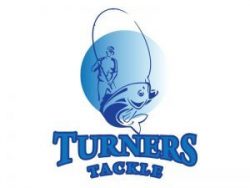Understanding Sea Fishing Rod Ratings in the UK
Selecting the right sea fishing rod is crucial for a successful and enjoyable angling experience. In the UK, sea fishing enthusiasts often encounter a variety of rod ratings, and understanding these ratings is essential for making informed decisions. In this article, we will delve into the key aspects of sea fishing rod ratings in the UK, providing anglers with valuable insights to enhance their tackle selection.
- Understanding Rod Ratings: Sea fishing rods come with specific ratings that indicate their recommended line class and casting weight. The two primary ratings to consider are the line class, expressed in pounds (lb), and the casting weight, typically measured in ounces (oz) or grams (g). These ratings help anglers match their rods with appropriate fishing conditions and target species.
- Line Class: The line class rating denotes the strength of the fishing line the rod is designed to handle. For example, a rod with a line class rating of 20-30 lb is suitable for using fishing lines within that weight range. Matching the line class to the fishing conditions and target species is crucial for maximizing the rod’s performance and preventing equipment failure.
- Casting Weight: The casting weight rating indicates the optimal weight of the lure or weight that the rod can cast effectively. For sea fishing, this is particularly important as different fishing scenarios, such as shore casting or boat fishing, may require different casting weights. Choosing the right casting weight ensures accurate and efficient casting while minimizing the risk of rod damage.
- Consider the Species and Conditions: When selecting a sea fishing rod, consider the target species and the prevailing fishing conditions. Lighter rods with lower line class and casting weights are suitable for smaller species and finesse fishing, while heavier rods are designed for larger and more powerful fish in challenging conditions.
- Rod Action: Rod action, which describes the flexibility and bending characteristics of the rod, is another crucial factor. Common rod actions include fast, medium, and slow. Fast-action rods bend primarily in the upper portion, providing more power for long casts and handling larger fish. Medium-action rods bend more evenly, offering a balance of power and flexibility. Slow-action rods bend throughout their length, making them suitable for lighter lines and smaller fish.
- Material and Build Quality: Pay attention to the material and build quality of the rod. High-quality materials, such as carbon fiber or composite blends, contribute to the rod’s strength, sensitivity, and overall performance. Consider factors like rod length, handle design, and the number of rod sections based on your personal preferences and intended fishing style.
- Budget Considerations: Sea fishing rods come in a range of price points, so it’s essential to balance your budget with the features and performance you require. Investing in a high-quality rod that meets your specific needs can enhance your fishing experience and contribute to long-term satisfaction.
Conclusion: Understanding sea fishing rod ratings in the UK is a fundamental aspect of choosing the right tackle for your angling adventures. By considering factors such as line class, casting weight, rod action, and build quality, anglers can make informed decisions that align with their target species, fishing conditions, and personal preferences. Whether you’re a novice or an experienced angler, selecting the right sea fishing rod ensures a more enjoyable and successful time on the water.
Anyone who has sea fished the Mersey with a Carp rod will fully understand matching the rod to the waters you are fishing.


